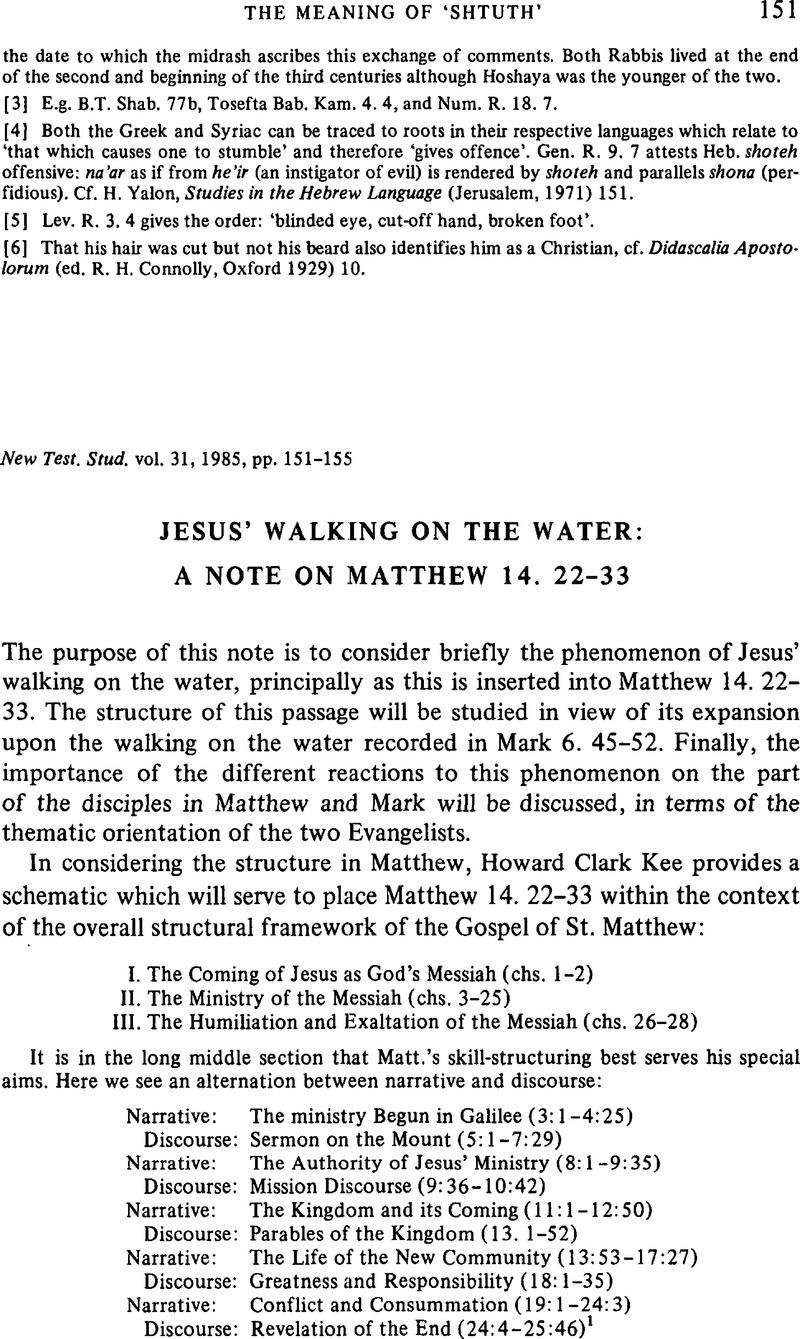Article contents
Jesus' Walking on the Water: A Note on Matthew 14.22–33
Published online by Cambridge University Press: 05 February 2009
Abstract

Information
- Type
- Short Studies
- Information
- Copyright
- Copyright © Cambridge University Press 1985
References
NOTES
[1] Kee, Howard Clark, ‘The Gospel According to Matthew’, Interpreter's One-Volume Commentary (Nashville: Abingdon Press, 1971) 610.Google Scholar
[2] Most expediently made by consulting Throckmorton, Burton H. Jr., Ed., Gospel Parallels (Nashville: Nelson, 1967) 80–1.Google Scholar
[3] Nineham, D. E., Saint Mark (London: Penguin Books, 1977) 181.Google Scholar Cf. also, Schweizer, Eduard, The Good News According to Mark (Atlanta: John Knox Press, 1970) 140–2, for further commenmentary on Mark 6. 45–52.Google Scholar
[4] Marxsen, Willi, Introduction to the New Testament (Philadelphia: Fortress Press, 1976) 150.Google Scholar
[5] That the orientation focuses on the Church is substantiated, among other sources, by Kee, op. cit., 627; Marxsen, op. cit., 150; Perrin, Norman, The New Testament: An Introduction (New York: Harcourt, Brace, Javanovich, Inc., 1974) 184Google Scholar; and Spivey, Robert A. and Smith, D. Moody Jr., Anatomy of the New Testament (New York: Macmillan Publishing Co., 1974) 133.Google Scholar
[6] Cf. among others: de Sant-Anna, Affonso Romano, Análise Estrutural de Romances Brasileiros (Petrópolis: Editora Vozes Ltda., 1975)Google Scholar; this is an excellent study of how Structuralist criticism is used, with chapters of illustrative examples.
[7] For discussions of Matthew's Sitz im Leben, cf. among others: Pesch, Rudolph, ‘Peter in the Church of the New Testament’, Concilium 66 (1971) 29Google Scholar; Spivey, and Smith, , op. cit., 116 ff.Google Scholar; Kee, , op. cit., 609Google Scholar; Schweizer, , op. cit., 15–21.Google Scholar
- 1
- Cited by

